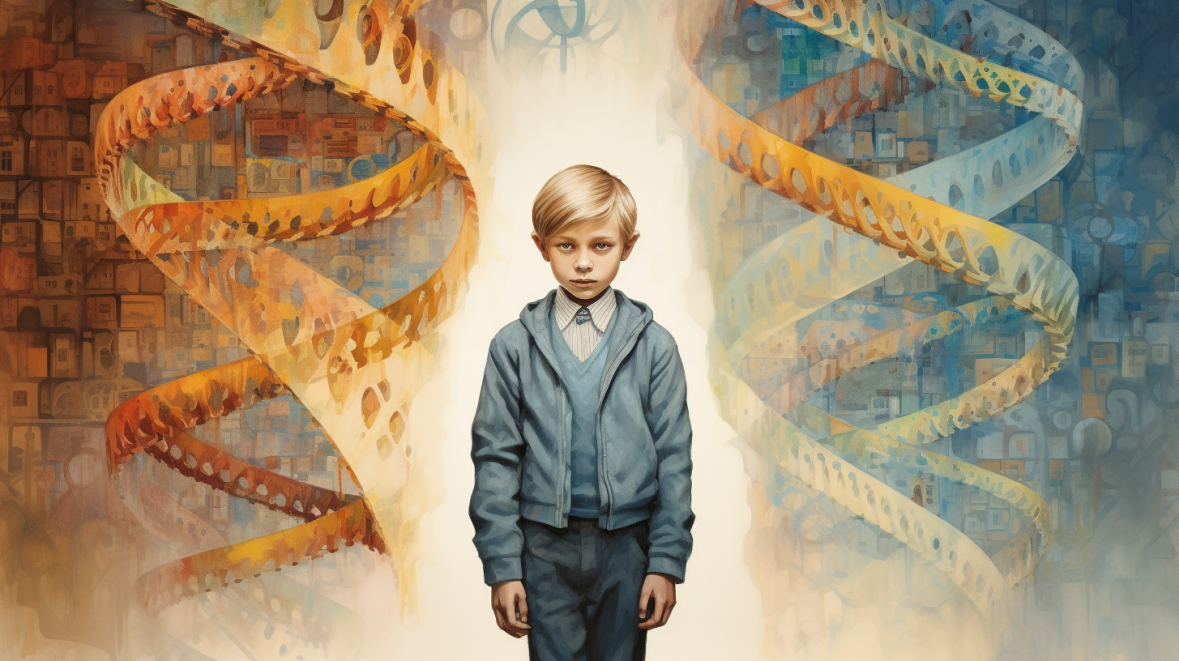A new study published in Brain Sciences has uncovered important epigenetic differences in a group of Mexican children diagnosed with autism spectrum disorder (ASD) compared to neurotypical controls.
The research provides new insights into the complex interplay between genes and environment in ASD, with implications for improving diagnosis and treatment.
Key facts:
- Researchers found 853 differentially methylated sites in 509 genes in buccal cells from 29 Mexican boys with ASD vs 7 controls.
- 64 of these genes were previously associated with ASD in SFARI database, indicating epigenetic regulation.
- 30 genes overlapped with high-confidence neurodevelopmental disorder genes.
- Top pathways were axon guidance and mental disorders, showing shared mechanisms.
- Non-invasive buccal swabs may provide epigenetic biomarkers to complement genetic testing.
- Study supports role of epigenetics in ASD, integrating genetic and environmental risk factors.
Source: Brain Sci. 2023
Epigenetic Differences Found in Mexican Children with Autism
In this study, researchers analyzed DNA methylation profiles in buccal epithelial cells from 29 Mexican boys diagnosed with ASD compared to 7 matched neurotypical controls.
DNA methylation is an important epigenetic mechanism that regulates gene expression.
The study found 853 differentially methylated CpG sites between cases and controls located in 509 genes across the genome.
Sixty-four of these genes were previously associated with ASD, indicating that epigenetic dysregulation of these ASD risk genes may be an important factor.
Thirty genes overlapped with high-confidence neurodevelopmental disorder genes from an external database, highlighting shared genetic mechanisms between ASD and related disorders.
Non-Invasive Buccal Swabs May Provide Biomarkers
One interesting aspect of this study is the use of DNA from buccal epithelial cells obtained non-invasively by a cheek swab.
Since brain tissue is difficult to obtain, buccal cells may provide an accessible source of biomarkers that reflect epigenetic dysregulation in ASD.
The researchers found that the methylation profile of buccal swab DNA could cluster most of the ASD cases separately from controls.
If validated in larger studies, such epigenetic biomarkers from buccal swabs may eventually complement genetic testing to improve ASD diagnosis.
Top Pathways Provide Clues to Biology

Pathway analysis of the genes with differential methylation pointed to axon guidance and mental disorders as top categories.
Axon guidance is critical for proper brain wiring during development.
Dysregulation of this pathway provides clues into how disrupted epigenetic regulation may lead to altered neural connectivity in ASD.
The mental disorders category reflects shared genetic mechanisms across neuropsychiatric conditions.
This supports the idea that epigenetic alterations in key pathways may converge to produce a spectrum of related disorders.
Integrating Genetic and Environmental Risk Factors
This study highlights the importance of epigenetic factors in ASD by uncovering differences in DNA methylation in genes known to confer ASD risk.
The results suggest epigenetic dysregulation may help explain how environmental influences interact with genetic vulnerabilities to influence neurodevelopment.
Epigenetics provides a bridge between genes and environmental stimuli, including potential triggers like infection, toxins, or nutrition deficiencies that may disrupt normal methylation during pregnancy or early life.
Integrating genetic, epigenetic and environmental data will be key to unraveling ASD’s complex web of causation.
ASD in the Mexican Population
Most autism research has focused on European or North American populations.
This study helps fill an important gap by examining epigenetic patterns in a Mexican cohort.
Understanding population and ethnic differences will be critical to developing more inclusive genetic screening tools and personalized treatment approaches.
More diverse research is needed to ensure scientific findings apply broadly across all groups impacted by ASD globally.
Future Outlook: Epigenetics & Autism
This early epigenetics research opens up exciting new directions to pursue in studying autism spectrum disorder.
Larger studies validating the findings are an important next step.
In particular, reproducing the identification of epigenetic biomarkers detectable in buccal swabs could provide a rapid screening tool to complement genetic testing for ASD.
The study also sets the stage for more research into gene-environment interactions in ASD by probing how exposures induce epigenetic changes that disrupt neurodevelopmental pathways.
Unlocking the epigenetic contributions to ASD will bring us one step closer to unraveling its complex causes, improving diagnosis, and developing more targeted, individualized treatments.
References
- Study: Differential DNA methylation from autistic children enriches evidence for genes associated with ASD and new candidate genes
- Authors: Mirna Edith Morales-Marin et al. (2023)







